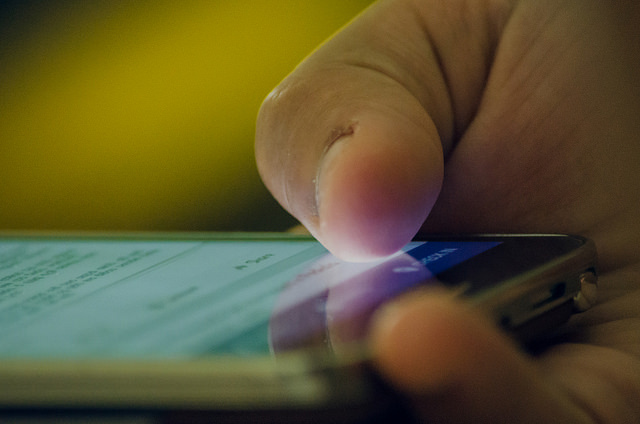I’m someone who has struggled with depression and anxiety my whole adult life. I’ve tried most of the tools you can think of (meds, workgroups, counseling etc.), and meditation is the one thing that finally worked.
Yet, getting started is stressful in itself.
In recent years, the medical benefits of meditation have become a more common knowledge.
We can now think of the practice as a kind of bicep curl for the brain. We accept the physical benefits of exercise delivering instant gratification through aesthetically pleasing tight butts, six packs and that lovely ripple of endorphins, so the natural next step has surfaced: mind training.
The benefits of meditation are, however, more subtle than those of physical training.
Many assume that meditation is reserved for robed gurus who sit in incense-filled rooms listening to spiritual songs. True, the roots of meditation are firmly planted in the vedantic period of India—a time when the pace of life was very different—and this more traditional meditation does not suit the modern world.
If it did, we’d all be focusing on the “power of now” with ease, and our mindfulness apps would be in flight mode.
Instead we have 70,000 plus thoughts a day, and we need discipline and clear return on investment before we engage in anything. This digital overload means we need that bicep curl for the brain more than ever.
I discovered meditation when I was living in Delhi, one of the noisiest cities in the world. Luckily, I am one of those people who loves incense and was open to the Indian philosophy. I am also, however, a very busy man. As a social entrepreneur who works in charity fundraising, teaches yoga, runs a small music festival and is currently setting up a digital detox retreat, I know that traditional meditation needs to be changed in order to work in the West. (Just as Bikram did with Yoga.)
For example, in the “West” life is about change, yet in the “East” it’s about accepting. Many modern meditation retreats are akin to binge dieting. People spend time on peaceful retreats and come back refreshed, but soon after crash unless they change their lifestyle.
Thirty years ago, only athletes and the rich would belong to gyms; today we need to do the same for the mind. An evolution of meditation.
Addressing our mental health brings us face-to-face with many feelings of dis-ease. We often equate depression or other forms of mental unsettlement as a sign of weakness. But we are human. Sadness and grief are normal.
Modern life is tough.
If we can use meditation as an everyday tool to prepare us for navigating through life’s challenges, then why not bring it into modern form?
One solution is mindfulness apps.
It seems ironic that we’d look to a device that generates so much information and noise, but in a “cash rich, time poor” society, mindfulness apps are more accessible than a meditation class. The word “mindfulness” versus “meditation” encourages adoption, and the fact that you “can do it anywhere” makes it easier to fit into a busy schedule.
There is an issue, though. Choice seduces the modern consumer choice at every turn. Type “mindfulness” into iTunes and you’ll get more than 70 apps to choose from.
Mindfulness might not give you a six pack and a tight butt; however, it will make you be happy with the present moment. I took the top 10 apps and used them for one month. Those that worked best for me are the ones far removed from the Eastern traditions, instead focused on discipline, science and an accent that I like:
1. The clear leader is Headspace.
Even the name focuses on the benefit. The New York Times said, “Andy Puddicombe for meditation is doing what Jamie Oliver has done for food.” Andy Makes it a personal journey to change your lifestyle. The subscription model, meditation and measurable progress buddies are all akin to how we were first drawn to physical exercise with gym membership.
2. Calm.com is not far behind with its subscription model and simplicity.
3. Pacifica is the only app I’ve reviewed with a cognitive behaviour therapy function, having a strong focus on goal setting action. For me it’s the best go-to SOS app.
4. Buddhify is the prettiest app, encouraging adoption through easy to understand situations such as “going to sleep” and “eating.”
5. Andrew Johnson has a range of apps, which are amazing based mainly on his beautiful voice; I do find, however, his range of choice of apps a bit confusing.
Others include mindfulness, digipill, the app mindfulness, mindfulness everyday guide, take a break and Zmeditations. These are all traditional meditation apps that offer little in the way of discipline (program/subscription) and have accents that could make you more stressed. Digipill sounds like a 1980s Hollywood trailer voice-over.
I’ve been doing this for a month and feel amazing. Earlier this year I gave myself three out of 10 in a depression workshop, and for the past month I’ve been 8 out of 10.
A big part of that has been the convenience of using apps daily.
My overall sense of balance and wellbeing of mind is very evident, and when I seek calm it comes more naturally.
The biggest change is my awareness. My senses are clearer, I can find quiet in a noisy room with ease. It’s not easy, but once you have it in your lifestyle change you’ll notice.
~
Relephant Read:
Elephant partners with a streaming service that offers yoga, meditation, fitness & healthy cooking classes for you.
~
Author: Chris Flack
Editor: Toby Israel
Photo: uditha wickramanayaka/Flickr
~
 Share on bsky
Share on bsky






Read 1 comment and reply